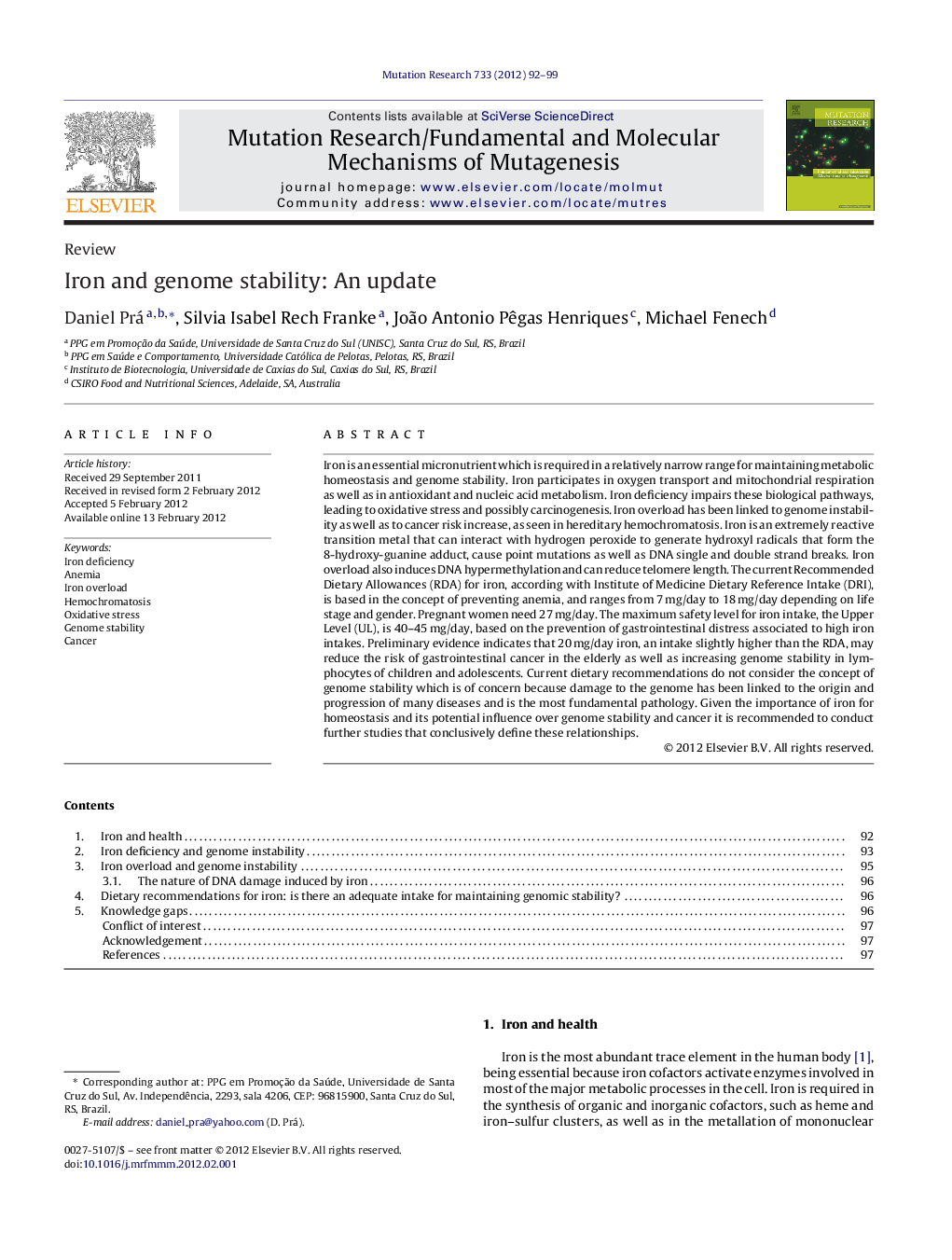| Article ID | Journal | Published Year | Pages | File Type |
|---|---|---|---|---|
| 2146458 | Mutation Research/Fundamental and Molecular Mechanisms of Mutagenesis | 2012 | 8 Pages |
Iron is an essential micronutrient which is required in a relatively narrow range for maintaining metabolic homeostasis and genome stability. Iron participates in oxygen transport and mitochondrial respiration as well as in antioxidant and nucleic acid metabolism. Iron deficiency impairs these biological pathways, leading to oxidative stress and possibly carcinogenesis. Iron overload has been linked to genome instability as well as to cancer risk increase, as seen in hereditary hemochromatosis. Iron is an extremely reactive transition metal that can interact with hydrogen peroxide to generate hydroxyl radicals that form the 8-hydroxy-guanine adduct, cause point mutations as well as DNA single and double strand breaks. Iron overload also induces DNA hypermethylation and can reduce telomere length. The current Recommended Dietary Allowances (RDA) for iron, according with Institute of Medicine Dietary Reference Intake (DRI), is based in the concept of preventing anemia, and ranges from 7 mg/day to 18 mg/day depending on life stage and gender. Pregnant women need 27 mg/day. The maximum safety level for iron intake, the Upper Level (UL), is 40–45 mg/day, based on the prevention of gastrointestinal distress associated to high iron intakes. Preliminary evidence indicates that 20 mg/day iron, an intake slightly higher than the RDA, may reduce the risk of gastrointestinal cancer in the elderly as well as increasing genome stability in lymphocytes of children and adolescents. Current dietary recommendations do not consider the concept of genome stability which is of concern because damage to the genome has been linked to the origin and progression of many diseases and is the most fundamental pathology. Given the importance of iron for homeostasis and its potential influence over genome stability and cancer it is recommended to conduct further studies that conclusively define these relationships.
